No products in the cart.
NEWS
Boost Your Tomato Harvest Naturally: Simple Homemade Fertilizer Guide
There’s an unmatched satisfaction in harvesting your own plump, sun-ripened tomatoes. Their incredible versatility makes them a staple in any home garden. While growing these beloved fruits presents a unique challenge compared to other vegetables, mastering it brings immense rewards. A critical element to success is providing your tomato plants with the right nutrients throughout their growth cycle. While commercial feeds are readily available, creating your own natural, homemade fertilizer is a highly effective approach that often utilizes materials you already have, costing little to nothing. This not only benefits your plants but also promotes a more sustainable gardening practice.
Discover how easy it is to transform everyday items into powerful natural fertilizers for your tomatoes, paving the way for a thriving organic garden.
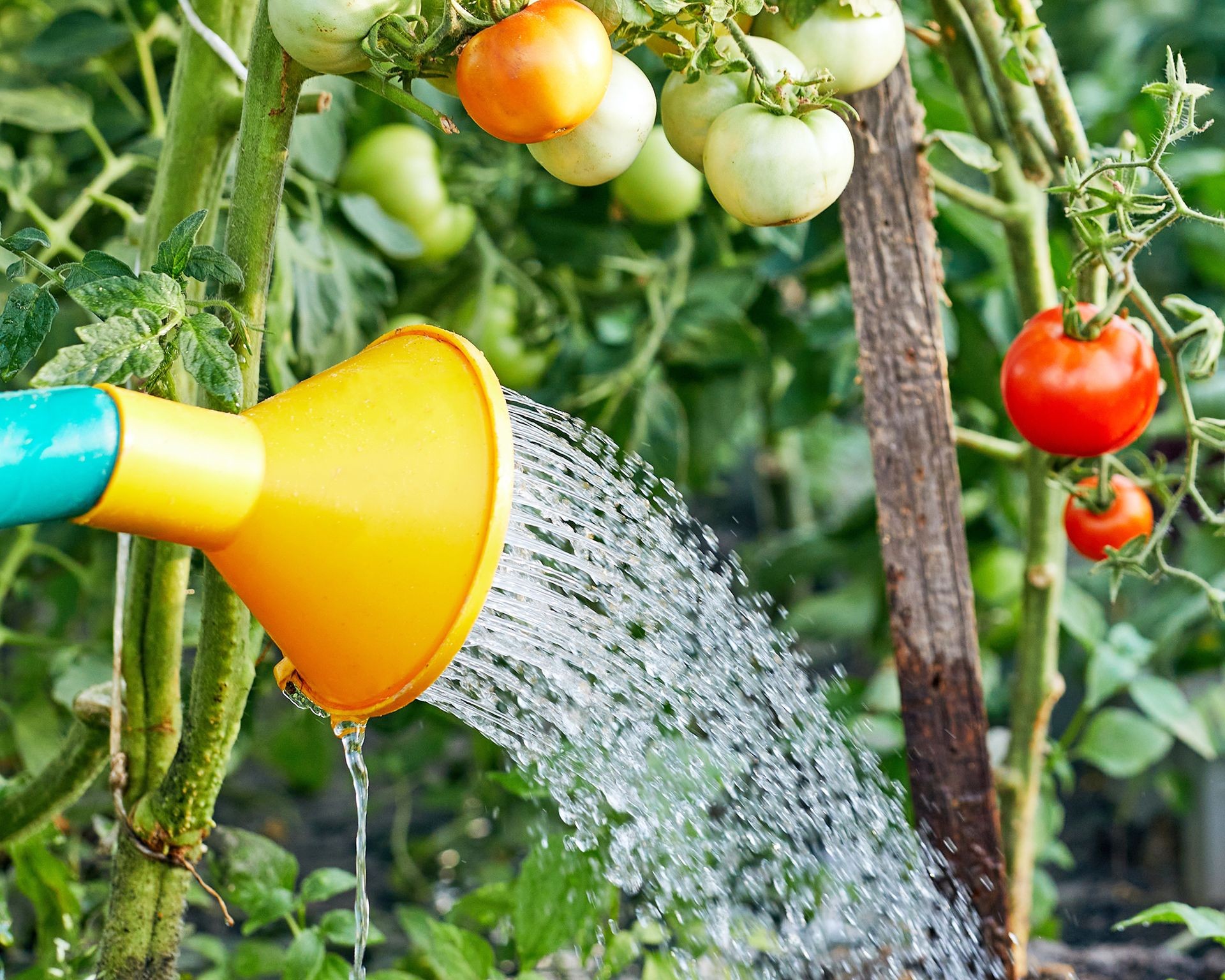 A hand watering the base of vibrant green tomato plants in a garden bed, illustrating essential care for healthy growth.
A hand watering the base of vibrant green tomato plants in a garden bed, illustrating essential care for healthy growth.
Understanding What Your Tomatoes Need to Thrive
To produce an abundant and healthy crop, tomato plants require a balanced diet of essential nutrients. Like most plants, they need nitrogen (N), phosphorus (P), and potassium (K) – often represented by the NPK ratio found on fertilizer labels. However, tomatoes have specific nutritional needs that shift as they grow, particularly craving more phosphorus and potassium as they move from vegetative growth to flowering and fruiting. Beyond NPK, micronutrients like calcium and magnesium are also crucial for preventing common issues such as blossom end rot and ensuring robust plant health. Providing these nutrients effectively, especially from natural sources, supports strong roots, healthy foliage, vigorous flowering, and ultimately, a bounty of delicious fruit.
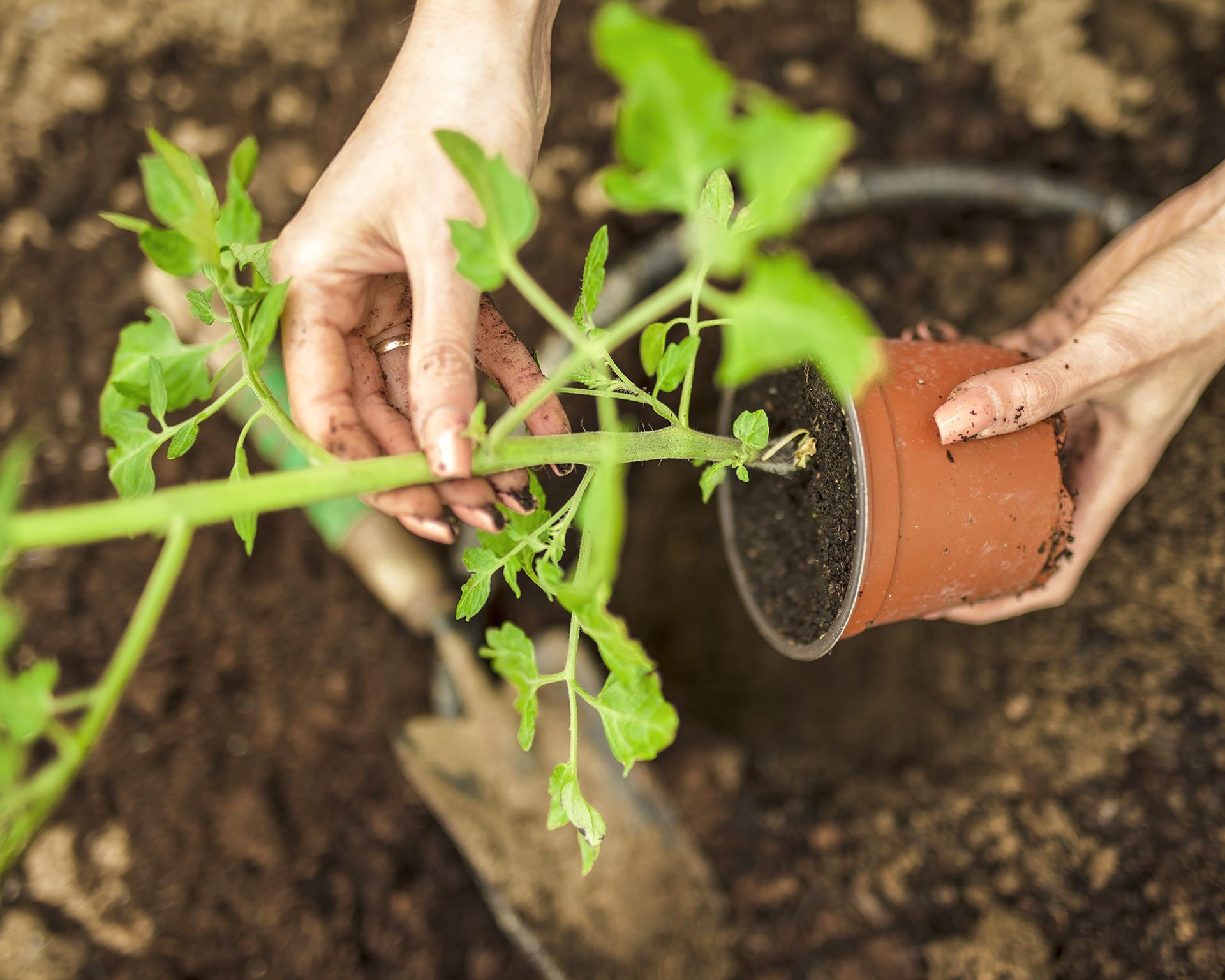 Carefully planting a small tomato seedling into prepared garden soil, the first step in growing delicious homegrown tomatoes.
Carefully planting a small tomato seedling into prepared garden soil, the first step in growing delicious homegrown tomatoes.
Crafting Powerful Homemade Tomato Fertilizers
Many of the best ingredients for DIY tomato fertilizer can be found right in your kitchen or garden waste bin. Using a combination of these homemade options throughout the growing season provides a broad spectrum of nutrients, offering maximum benefit to your plants.
Ideally, prepare your soil several weeks before planting by incorporating well-rotted manure or rich organic compost. This establishes a strong nutritional base. Begin with more nitrogen-rich feeds early in the season to support leafy growth, then transition to sources higher in phosphorus and potassium as your plants prepare to flower and set fruit. Fertilize at planting and continue every few weeks until the end of harvest.
Banana Peels: A Potassium Powerhouse
Banana peels are nature’s perfect, nitrogen-free fertilizer for tomatoes, packed with potassium, magnesium, phosphorus, and calcium. Potassium is vital for fruit development and overall plant vigor. The easiest way to utilize them is to chop peels into small pieces and dig them into the soil around your plants. Doing this before planting gives the peels time to break down and release their nutrients. You can continue adding chopped peels around the base of plants throughout the season, gently burying them beneath a thin layer of soil.
Vegetable Peelings: Nutrient-Rich Boost
Common kitchen scraps like vegetable peelings are loaded with nitrogen, potassium, and phosphorus. While excellent additions to your compost pile, they can also directly benefit tomato plants. Burying peelings in the planting hole a couple of months before you plant allows them to decompose, enriching the soil. For a faster nutritional boost, steep vegetable peelings in water for a day or two to create a nutrient-rich “tea.” Strain the liquid and use it to water your plants, providing readily available nutrients. Save up peelings by freezing them until you’re ready to use them.
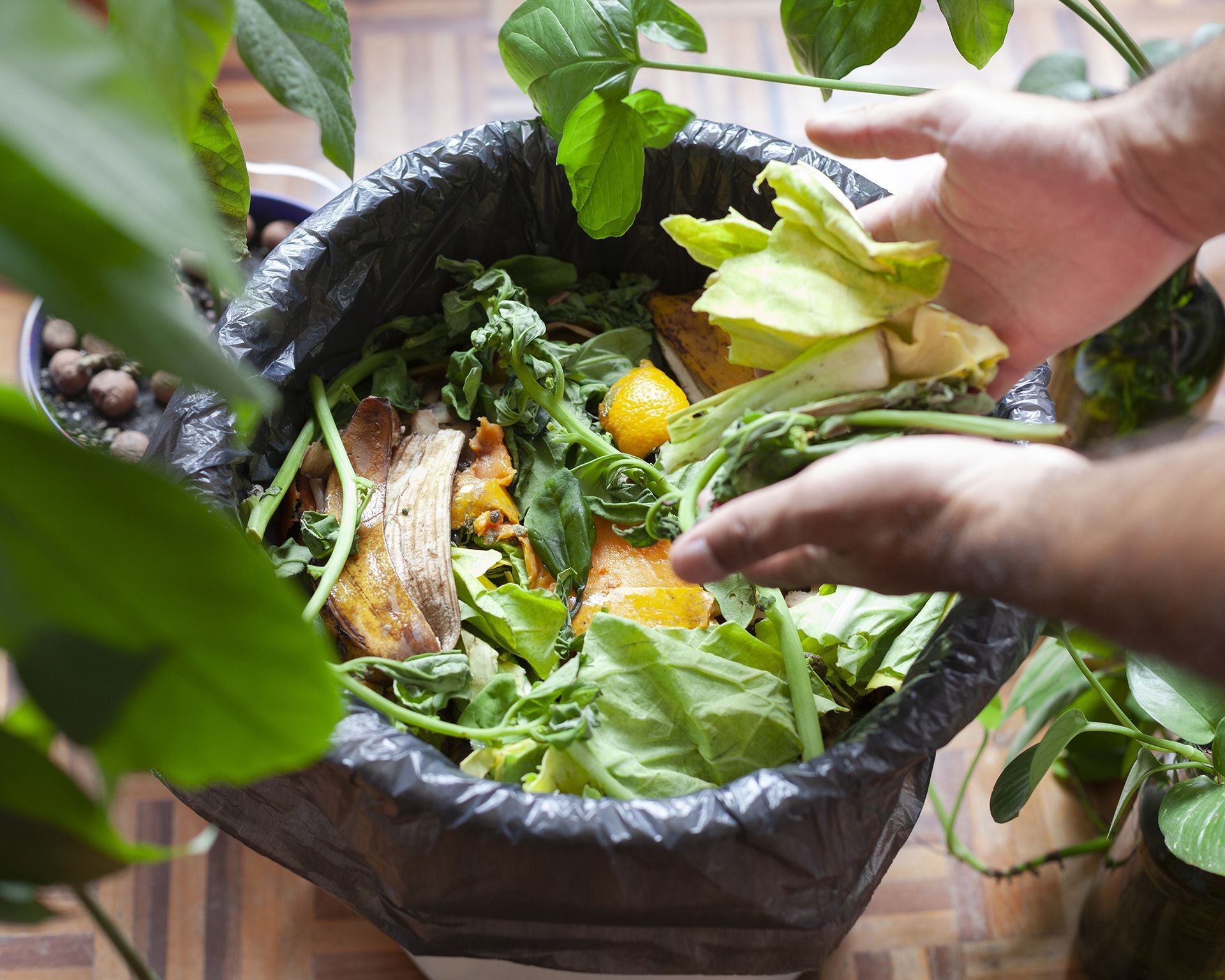 Closeup view of various kitchen scraps like vegetable peelings and fruit rinds being added to a composting bin, showing materials perfect for homemade plant fertilizer.
Closeup view of various kitchen scraps like vegetable peelings and fruit rinds being added to a composting bin, showing materials perfect for homemade plant fertilizer.
Cooking Water: Unsalted Liquid Gold
Don’t pour nutrient-infused water from boiling vegetables, pasta, or rice down the drain. Once cooled, this water contains phosphorus, nitrogen, iron, and calcium – all beneficial for tomatoes. Crucially, ensure the water is unsalted, as salt can be detrimental and even fatal to your plants. Using unsalted cooking water is a simple, zero-waste way to give your tomatoes an extra nutritional drink.
Used Coffee Grounds: Slow-Release Nitrogen & pH Helper
Used coffee grounds provide a slow-release source of nitrogen, which fuels healthy leaf development, especially important in the early growth stages. They also contribute phosphorus, potassium, boron, calcium, copper, iron, magnesium, and zinc. Coffee grounds can also help maintain a slightly acidic soil pH, which tomatoes prefer. However, because they add nitrogen, use them in moderation. You can mix dried grounds into the soil before planting, mulch around plants with a thin layer (about half an inch), or make a “coffee tea” by soaking two cups of used grounds in five gallons of water for a liquid feed.
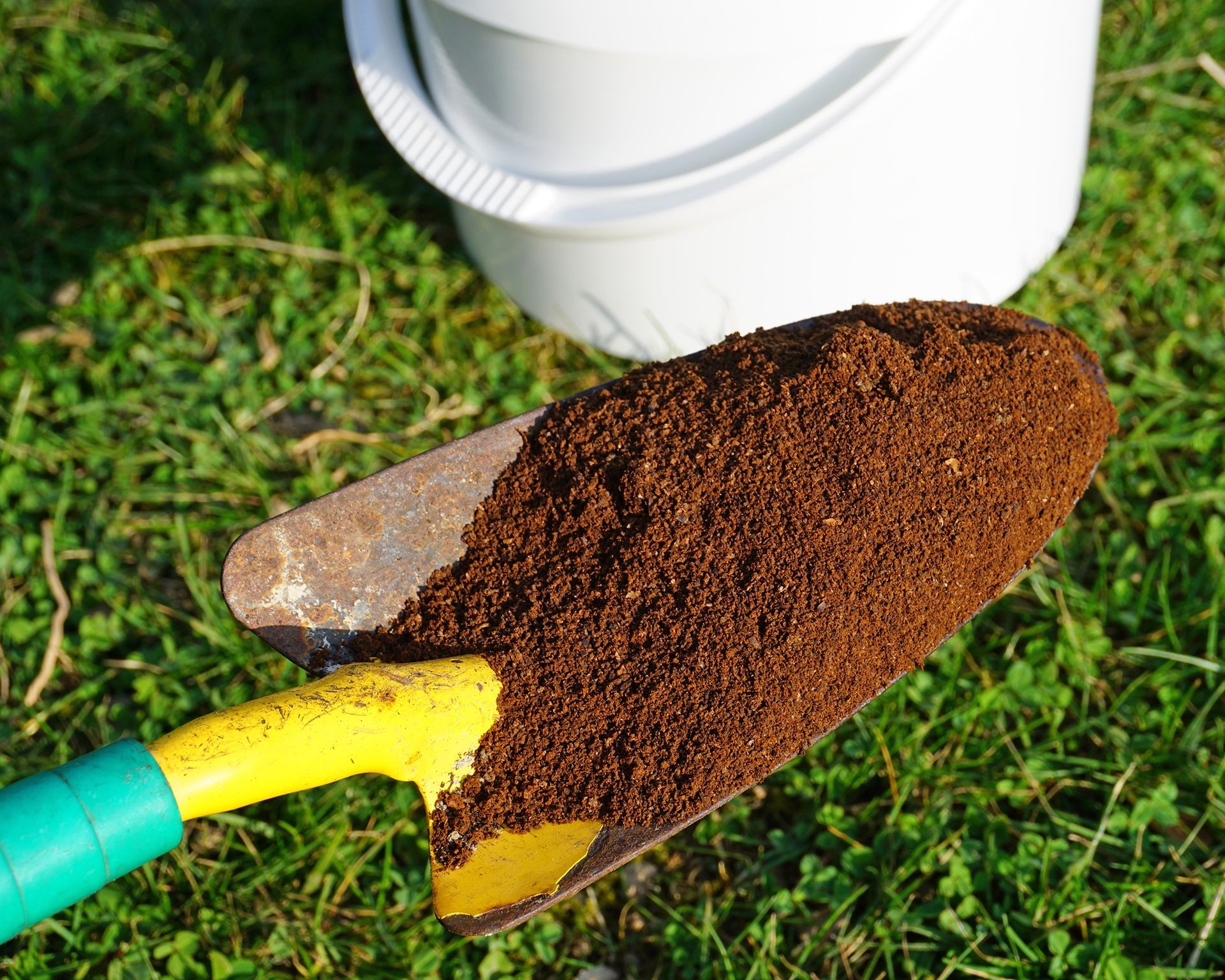 A small garden shovel filled with used coffee grounds next to a tomato plant base, illustrating how this common household waste can nourish soil.
A small garden shovel filled with used coffee grounds next to a tomato plant base, illustrating how this common household waste can nourish soil.
Onion Peels: A Source of Potassium and Calcium
The dry, outer skins of onions (both red and white) are surprisingly rich in potassium and calcium, making them a valuable addition to your homemade fertilizer arsenal. You can grind dried onion peels into a powder and sprinkle it into the soil, or create a potent liquid fertilizer by soaking the peels in water for about a week, then straining and using the liquid to water your plants.
Eggshells: Calcium for Strong Fruits
Eggshells are an excellent source of calcium, vital for preventing blossom end rot, a common issue in tomatoes characterized by dark, sunken spots on the fruit’s bottom. They also contain small amounts of potassium, phosphorus, and magnesium. While whole eggshells break down slowly in compost, you can make their calcium available more quickly by grinding cleaned, dried shells into a fine powder to mix into the planting hole. Another effective method is to soak crushed, cleaned eggshells in boiling water for a few days, then strain the water to use as a calcium tonic for watering the soil or as a foliar spray applied directly to the leaves.
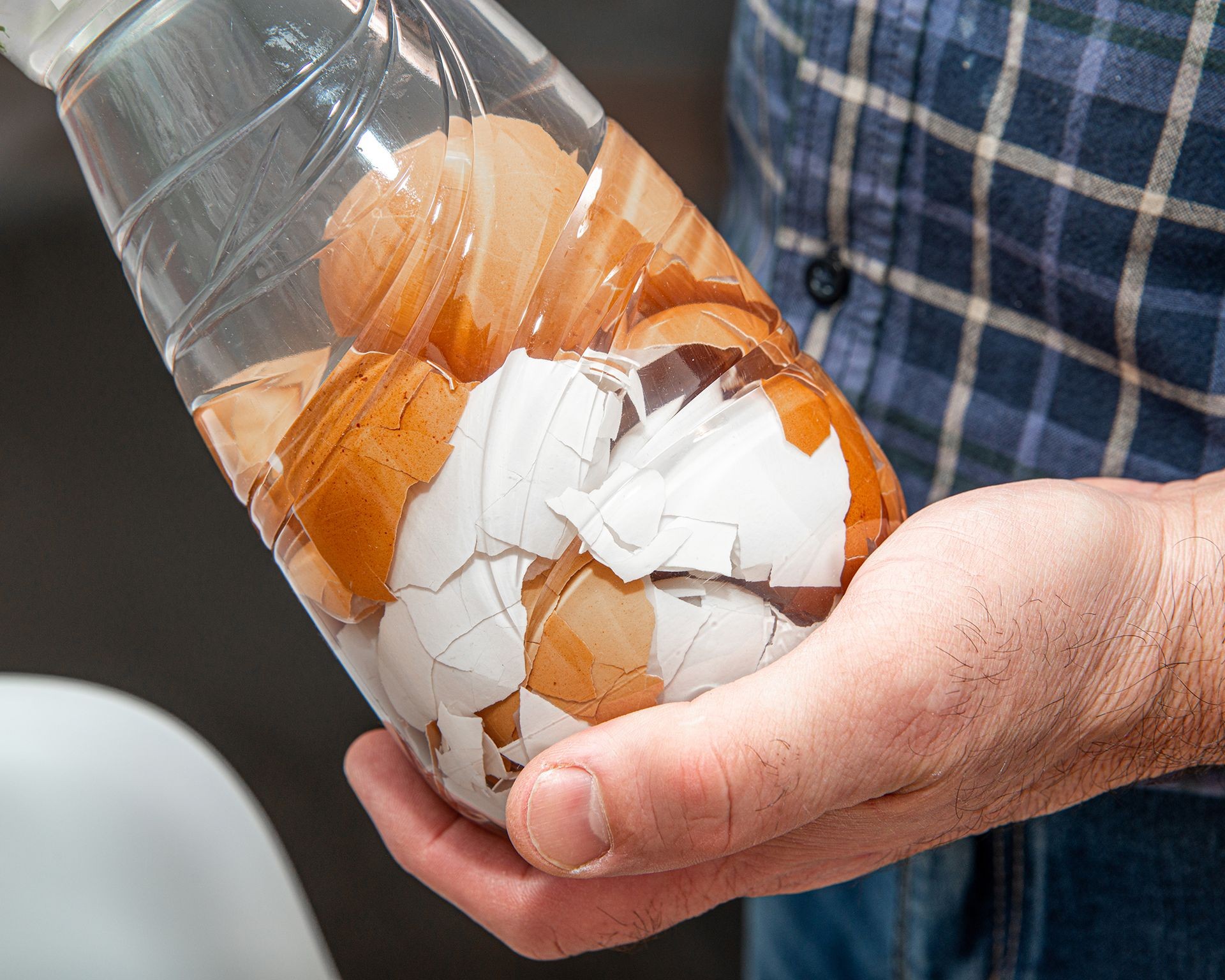 Crushed eggshells soaking in a jar of water, a simple method to create a calcium-rich liquid tonic for boosting tomato plant health.
Crushed eggshells soaking in a jar of water, a simple method to create a calcium-rich liquid tonic for boosting tomato plant health.
Epsom Salts: Magnesium Support (Use Sparingly)
Epsom salts, chemically magnesium sulfate, are a natural compound containing magnesium and sulfur. While often used as a general plant tonic, they are primarily beneficial for tomatoes when the soil is deficient in magnesium. Tomatoes are one plant that particularly benefits from magnesium supplementation, which aids in chlorophyll production and nutrient uptake. However, overuse can cause imbalances, so apply them sparingly and consider testing your soil if possible. Dilute about one tablespoon of Epsom salts per gallon of water and apply at planting, then perhaps once a month thereafter. A diluted Epsom salt solution can also be used as a foliar spray for quick absorption.
Conclusion: Nourish Your Tomatoes Naturally
Creating homemade fertilizers for your tomato plants is a rewarding and sustainable way to ensure they receive the diverse nutrients they need for vigorous growth and a bountiful harvest. By utilizing common kitchen scraps and simple ingredients, you can provide essential elements like nitrogen, phosphorus, potassium, calcium, and magnesium without relying solely on synthetic products.
Embracing these natural methods contributes to healthier soil and stronger, more resilient plants, leading to truly delicious homegrown tomatoes. Give these homemade fertilizer recipes a try in your garden this season. Explore our range of organic gardening supplies and plant care products at Biogarden.asia to further support your journey toward successful and sustainable plant cultivation. Share your experiences and homegrown tomato successes with the Biogarden community!



